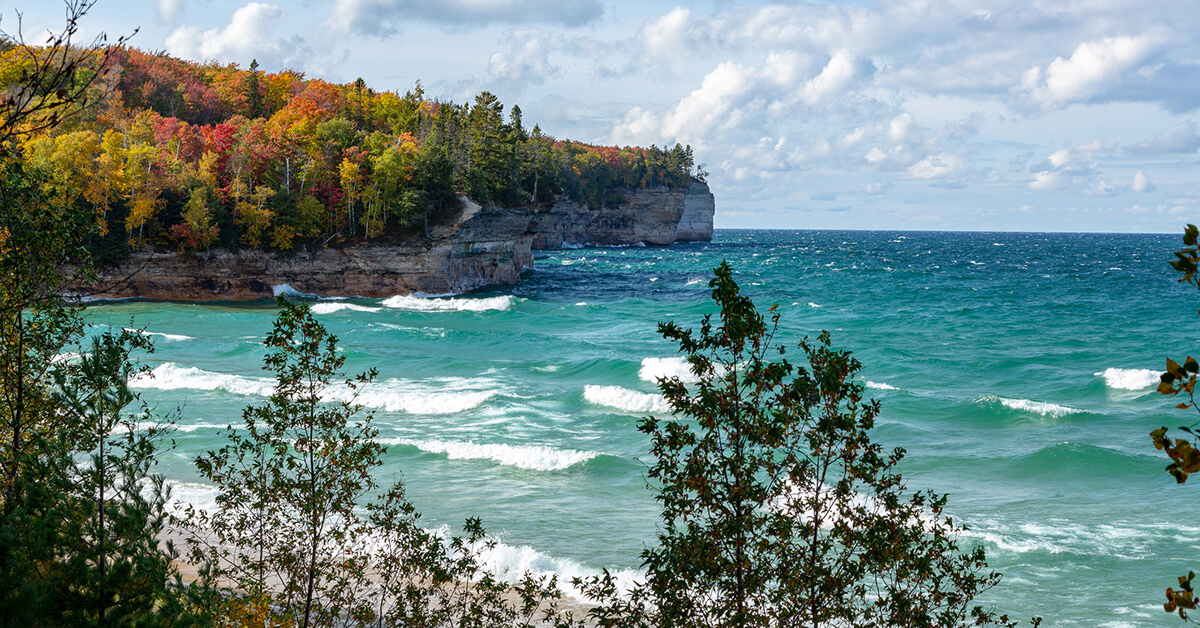
3 Challenges Homeowners are Facing as the Great Lakes Reach Record Highs
Record high water levels across the Great Lakes have been a concern to lakefront homeowners since 2019, and levels are expected to continue rising on lakes Michigan and Huron. High levels of precipitation and excess runoff during the spring and summer have driven the erratic lake levels over the years.
Lake height is measured by Net Basin Supply (NBS) which, as explained in the article Great Lakes Water Levels Have Swung From Record Lows to Record Highs. Here’s Why, “is evaporation subtracted from the sum of precipitation and runoff into the lakes. When the inflow (precipitation and runoff) is greater than evaporation, you get rising lakes. If the evaporation exceeds the inflow, lakes drop.”
Homeowners and the towns they live in are facing mounting challenges with these record-high lake levels; here are three:
For homeowners, the main challenge of rising lake levels is property damage: how to prevent it and how to repair it. Tim Lathe, a homeowner in Holland, Michigan bought his lakefront home four years ago. By June of 2020, his beach was gone, and the wooden stairway leading up to his home crumbled and collapsed. His deck now teeters on the edge of a waterfront dune that is eroding as lake levels continue to rise.
The article Record-High Michigan Water Levels Are a Nightmare for Homeowners notes that insurance won’t pay for Lathe’s crumbling property, which is estimated to be worth approximately $13,000 per linear foot. And while Lathe has lost only his stairway, and likely his deck, some of his neighbors have been forced to demolish portions of their houses entirely.
Homeowners are presented with a unique challenge when it comes to protecting their lakefront properties from rising lake levels. The Great Lakes’ beaches are held in public trust, and protective add-ons are often at odds with protecting shoreline aquatic habitats.
The Michigan Department of Environment, Great Lakes, and Energy (EGLE) provide oversight for permitting and construction along the shorelines. The article High Water Levels Prompt Michigan to Offer Solutions for Property Owners notes, “That oversight includes permitting of the materials and construction methods that will limit negative impacts on neighbors, the Great Lakes, and in many cases critical dunes.”
Current legislation allows shoreline construction without a permit. The EGLE is working to accelerate the permitting process to avoid the negative impacts of unpermitted construction, which can lead to more problems when, for instance, incorrectly installed barriers that are destroyed by waves spread debris throughout the lake or when one person’s protective measures make their neighbor’s situation worse.
Making matters more challenging is the fact that the Great Lakes’ beaches are held in public trust and courts have typically “upheld the public’s right to walk the Great Lakes’ beaches.” In response, EGLE officials are looking for less impactful ways to protect beachfront houses while minimizing ecological harm. One such solution is the use of rip-rap, a barrier of rock or similar material used to armor shorelines against erosion, instead of seawalls.
But suppose the beach in front of privately held properties is eventually washed away, despite the use of riff-raff or a seawall. In that case, the question would arise about whether the remaining shoreline then becomes protected land under court-protected public trust rights. University of Michigan professor of architecture, Richard Norton said in the article Lake Levels Give Rise to Legal Questions, “he expects to see legal challenges in the coming months not only between neighboring landowners about shoreline armaments but also to determine whether the state revokes its public trust duty by even allowing Great Lakes shorelines to be armored.”
Homeowners away from the shoreline are also affected by the rising lake levels. In Detroit, the Detroit River is spilling over into the streets, causing homeowners to place planks across their yards just to enter their homes without trudging through the flooded roads. Dawn Butler, a homeowner in Detroit’s Jefferson-Chalmers neighborhood, told the Detroit Free Press, “Every day, one of us neighbors is raking out the storm drains to make sure they’re not clogged. But the water going down one drain is coming back up somebody else’s drain.”
The state continues to search for ways to repair damaged roads, bridges, and parks that have resulted from the rising lake levels. Before investing in more significant preventative fixes, state officials are looking for answers about whether or not high lake levels are the new normal.
Brad Wiferich, director of the Michigan Department of Transportation, said if lake levels stop following historical patterns of low water levels following high water levels, the cost of repairs moves to a whole new magnitude. “Longer-term fixes could be about $100 million,” he said. “And that is really what could be needed if this turns out to be a long-term event.” This money would come from already planned infrastructure repairs, of which Michigan has many.
Erratic water levels may be the new norm in Michigan. Homeowners and government officials should act now to prevent further damage to their homes and cities in the future.
Time to Focus on Affordable Housing
Taxes on real estate are not the answer. Sign the petition calling on Congress to address our country’s housing shortage.





